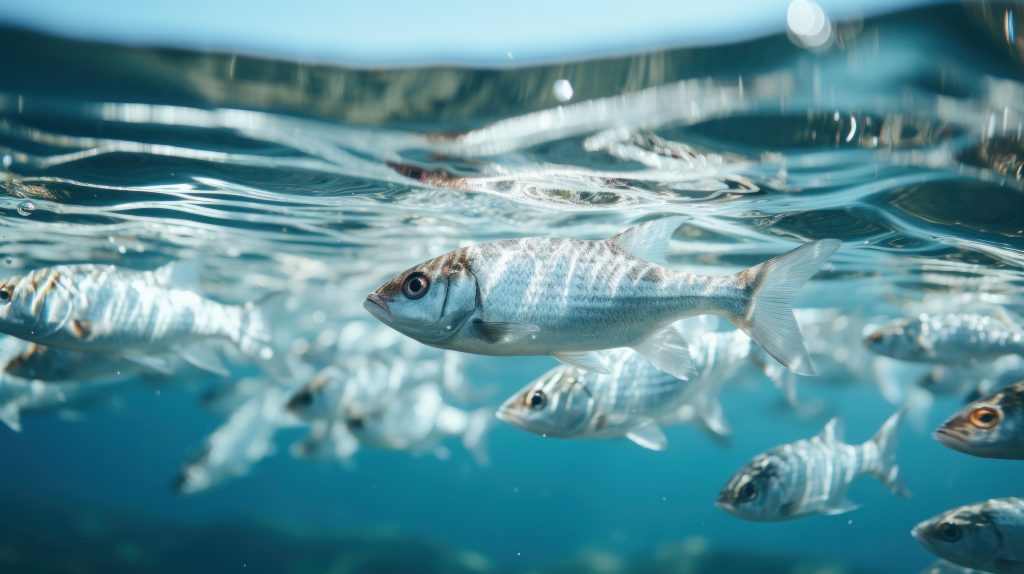Aquaculture feeds depend on high quality to ensure healthy fish and optimal production. However, lipid oxidation during processing and storage degrades nutrients, reduces feed palatability, and compromises fish health. Traditionally, synthetic antioxidants such as ethoxyquin and butylated hydroxytoluene (BHT) have been used to control this process, but safety concerns and regulatory restrictions have limited their use.
Natural antioxidants like vitamin E, carotenoids, and plant extracts offer a safe and effective alternative. They not only protect feed from oxidation but also strengthen fish immunity and improve growth.
Why oxidative stability matters in aquaculture feed
Oxidative stability refers to the ability of feed to resist lipid peroxidation during production and storage. Modern aquaculture feed manufacturing often involves extrusion, a thermal process that improves digestibility and inactivates anti-nutritional factors. However, extrusion also exposes lipids to high temperatures and oxygen, conditions that accelerate oxidative reactions. The porous structure of extruded pellets further facilitates oxygen penetration, increasing susceptibility to rancidity during storage.
If not properly stabilized, oxidized feed can lead to harmful consequences: reduced levels of essential fatty acids, impaired fish growth, weakened immune responses, and higher disease susceptibility. Studies highlight that diets containing oxidized fish oil impair stress responses and immune function in species like seabream and turbot, resulting in higher susceptibility to infections. Additionally, the quality of fish fillets deteriorates, with lower concentrations of polyunsaturated fatty acids (PUFAs), which reduces their nutritional value in the eyes of consumers. Therefore, incorporating effective antioxidants during formulation is crucial to counteract the oxidative challenges introduced by extrusion and storage.
Natural antioxidants as functional feed additives
The feed industry has historically relied on synthetic antioxidants, notably butylated hydroxyanisole (BHA), BHT, and ethoxyquin, to inhibit lipid oxidation in feeds and fish meal. While effective, these synthetic compounds have faced increasing scrutiny due to their potential transfer to fish tissues and associated health risks. Ethoxyquin, in particular, has been linked to residues accumulating in shrimp, raising safety concerns in international markets. This issue became critical when Japanese authorities rejected numerous shrimp shipments from India in 2012 because ethoxyquin residues exceeded the strict limit of 0.01 ppm.
The concerns associated with synthetic antioxidants transferring to the fish muscle in alarming amounts, and their adverse health effects, encourage the transition toward natural antioxidants that meet regulatory and consumer expectations.
Among natural antioxidants, vitamins are essential for aquaculture feeds. Vitamin E, in its natural form (D-alpha-tocopherol), acts as a lipid-soluble antioxidant, preventing lipid peroxidation and protecting valuable polyunsaturated fatty acids. It preserves the feed’s nutritional profile during extrusion and storage. Its antioxidant activity extends to fish physiology, where it enhances immune defenses, improves environmental stress tolerance, and promotes growth and development.
Benefits of natural feed additives for fish health and performance
Vitamin E, vitamin C, carotenoids, and polyphenols contribute to oxidative protection. Scientific literature evidences the benefits of natural feed additives for aquaculture health and performance:
- Research has demonstrated that adding vitamin E to fish feed improves the growth rate of carp, enhances their antioxidative capacity, and mitigates oxidative stress damage [1].
- Rosemary extract has demonstrated similar or even superior protective effects compared to synthetic antioxidants like BHT, maintaining oxidative stability in extruded feeds stored under both cold and ambient conditions [2].
- Astaxanthin, a carotenoid widely used in aquaculture, enhances pigmentation, improves stress tolerance, and reduces inflammatory damage in fish tissues [3].
These examples demonstrate how natural antioxidants not only preserve feed quality but also actively contribute to healthier and more resilient aquaculture species.
Selecting the right aquaculture feed additive: quality and efficacy
Choosing an effective antioxidant requires careful consideration of its origin, stability, and interaction with feed components. It must remain active under processing conditions and provide lasting protection during storage. Efficacy also depends on the bioavailability and mechanism of action. Compounds should integrate well into feed matrices, ensuring consistent antioxidant activity. Additionally, regulatory compliance and safety profiles are critical factors, as consumer demand for natural and clean-label products continues to rise.
In response to the increasing demand for natural solutions to maintain oxidative stability in aquaculture feed, Btsa has developed Oxabiol® E, natural vitamin E from non-GMO vegetable oil for animal nutrition. Natural vitamin E displays greater biological activity than its synthetic counterpart. It protects cell membranes and prevents oxidative stress. Its addition to aquaculture feed intervenes in the development of vital functions, contributes to the optimal functioning of the circulatory system, and strengthens the immune system.
With our commitment to sustainability and continuous innovation, we stand as a strategic partner for aquafeed producers seeking to improve product performance and meet the demands of a growing global market with natural antioxidants.
Sources
[1] Li J, Liang XF, Tan Q, Yuan X, Liu L, Zhou Y, Li B. Effects of vitamin E on growth performance and antioxidant status in juvenile grass carp Ctenopharyngodon idellus. Aquaculture. 2014;430:21-27. doi:10.1016/j.aquaculture.2014.03.019.
[2] Hernández A, García García B, Jordán MJ, Hernández MD. Natural antioxidants in extruded fish feed: Protection at different storage temperatures. Anim Feed Sci Technol. 2014;195:112-9. doi:10.1016/j.anifeedsci.2014.06.003.
[3] Hu X, Ma W, Zhang D, Tian Z, Yang Y, Huang Y, Hong Y. Application of Natural Antioxidants as Feed Additives in Aquaculture: A Review. Biology (Basel). 2025 Jan 17;14(1):87. doi: 10.3390/biology14010087.

